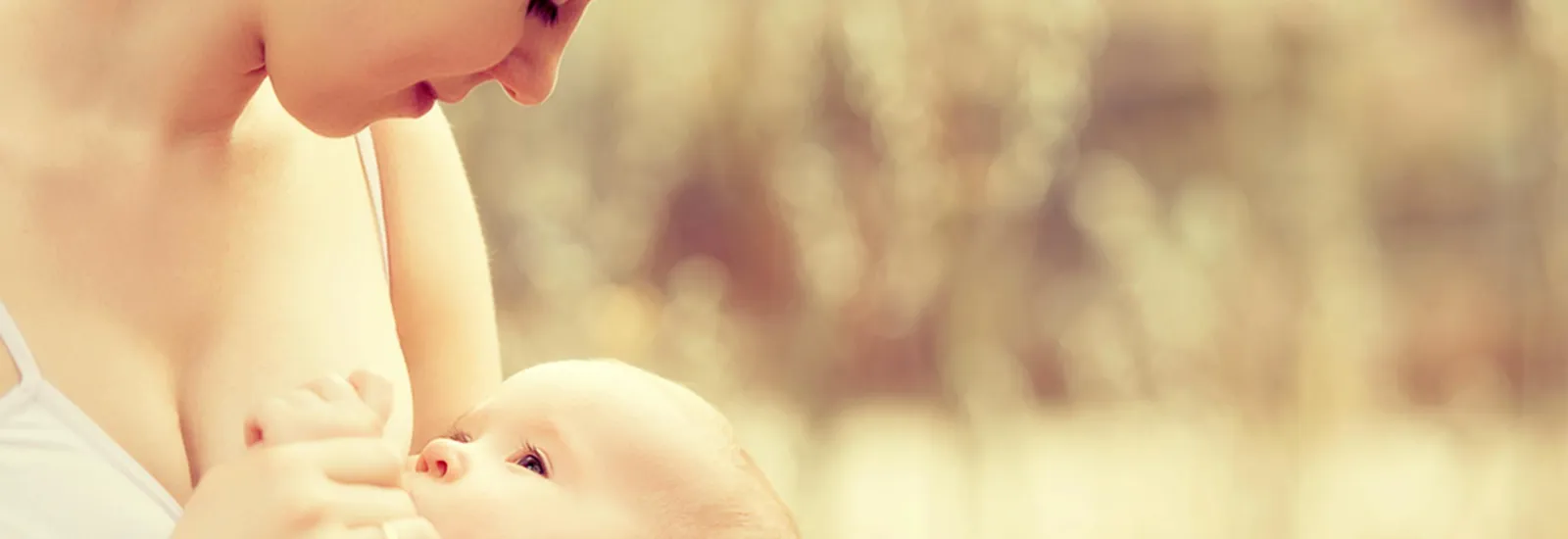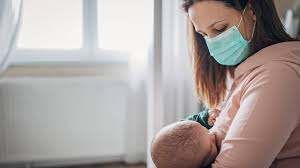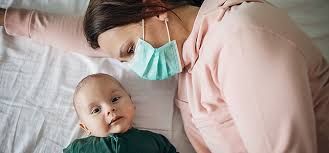
Breastfeeding and COVID-19
The outbreak of COVID-19 is a stressful time for everyone. During
the pandemic, concern has been expressed about breastfeeding and Covid-19. Specifically,
families want to know if and how they can breastfeed safely if a parent or
family member tests positive for the virus that causes COVID-19.
We continue to learn more about COVID-19 every day. The Centers
for Disease Control (CDC) and the American
Academy of Pediatrics (AAP) have recently updated their recommendations
related to breastfeeding and COVID-19, as more information is gathered through
research. Authorities agree that lactating parents can successfully start and
maintain breastfeeding, even when suspected or confirmed COVID-19 positive, using
recommended precautions.

The benefits of breastfeeding during a pandemic include long-term
and short-term benefits for both you and your baby.
One of the benefits of breastmilk extends beyond illness, because
breastmilk - the primary food for babies - is easily available from a lactating
parent! As long as you continue breastfeeding, there
should be no concern on where your baby's next meal will come from and you
won't have to worry about out of stock feeding items in stores.
As studies continue to determine if breastmilk protects
babies against COVID-19, we do know that breastfed infants are less
likely to experience severe respiratory symptoms when they get sick.
Breastmilk enhances the immune response in infants and is protective against
diseases. It is also known that hormones
release during breastfeeding to help relieve
maternal anxiety and stress.
Whether or not to start or continue breastfeeding should be
determined by the breastfeeding parent, in coordination with family and health care
providers. COVID-19, caused by
SARS-CoV-2 virus, spreads
between people who are in close contact, mainly through respiratory
droplets when an infected person coughs, sneezes, or talks. While studies
have detected SARS-Co-V-2 nucleic acid in breast milk, it is not known
whether the infectious virus is secreted in breastmilk, nor has it been
established whether exposed milk contains protective antibodies.
When a mother has influenza, another respiratory viral
illness, breastfeeding has been shown to be safe if appropriate precautions are
taken. A person with suspected or confirmed COVID-19 should do their best
to avoid spreading the virus to others, however, providing
breastmilk to infants remains widely supported.

If a parent is suspected or confirmed positive for COVID-19
(or has spent several minutes around others who are suspected or confirmed
positive, especially without protection) guidance
provided by the CDC and AAP should be consulted.
If you have COVID-19 and are direct breastfeeding or caring for your baby, follow these steps:
- Avoid touching your face and mask, use tissues to blow your nose, and cough or sneeze into your inner elbow if no tissue is available.
- Wash your hands with soap and water (20+ seconds, long enough to sing the Happy Birthday song twice) often. Do this especially after touching your face/mask, going to the restroom, when your hands are visibly soiled and before close contact with your baby. If you do not have access to soap and water, use a 60% or higher alcohol based hand sanitizer.
- Wear an "unvented" face mask that covers your nose, mouth, and chin during times you will be within six feet of your baby. When you wear a mask, it may help protect your baby/child while close to your face, such as during breastfeeding.
- Masks should NOT be placed on newborns or children younger than 2 years of age and plastic infant face shields are not recommended.
- Especially in the early days of breastfeeding, holding your baby skin-to-skin helps with let-down of milk and encourages the baby to latch to the breast. After breastfeeding is well established, there are additional benefits of skin-to-skin.
- A healthy caregiver who is not at increased risk for severe illness, using appropriate infection prevention precautions (e.g., wearing a mask, practicing hand hygiene), should provide care for the neonate, if possible.
- Sanitize surfaces that are touched regularly with solutions that are known to kill COVID-19. Follow the directions provided on the container to ensure that your efforts actually kill the virus.
If you have COVID-19 and choose to express breast milk, follow these steps:
- Avoid touching your face and mask, use tissues to blow your nose, and cough or sneeze into your inner elbow if no tissue is available.
- Wash your hands with soap and water (20+ seconds, long enough to sing the Happy Birthday song twice) often. Do this especially after touching your face/mask, going to the restroom, when your hands are visibly soiled and before touching any pump or bottle parts, and before expressing breast milk. If you do not have access to soap and water, use a 60% or higher alcohol based hand sanitizer.
- Use a dedicated breast pump (not shared).
- Wear an "unvented" face mask that covers your nose, mouth, and chin during milk expression.
- Follow CDC recommendations for proper pump cleaning after each and every use, cleaning all parts that come into contact with breast milk.
- If possible, expressed breast milk should be fed to the infant by a healthy caregiver who does not have COVID-19, is not at high-risk for severe illness from COVID-19, and is a caregiver living in the same home.
There are not evidence-based guidelines that direct whether
cleansing the breast prior to breastfeeding or milk expression, or disinfecting
external surfaces of milk collection devices (bottles, collection bags, etc.),
are necessary steps to reduce potential transmission of COVID-19. Mothers may
consider personally engaging in these additional steps such to minimize routes
of potential exposure.
Breastfeeding is a key preventive health step for mom and baby, even during the pandemic. Talk with your pediatrician about how to keep your baby healthy and what resources might be available in your community to help you.

